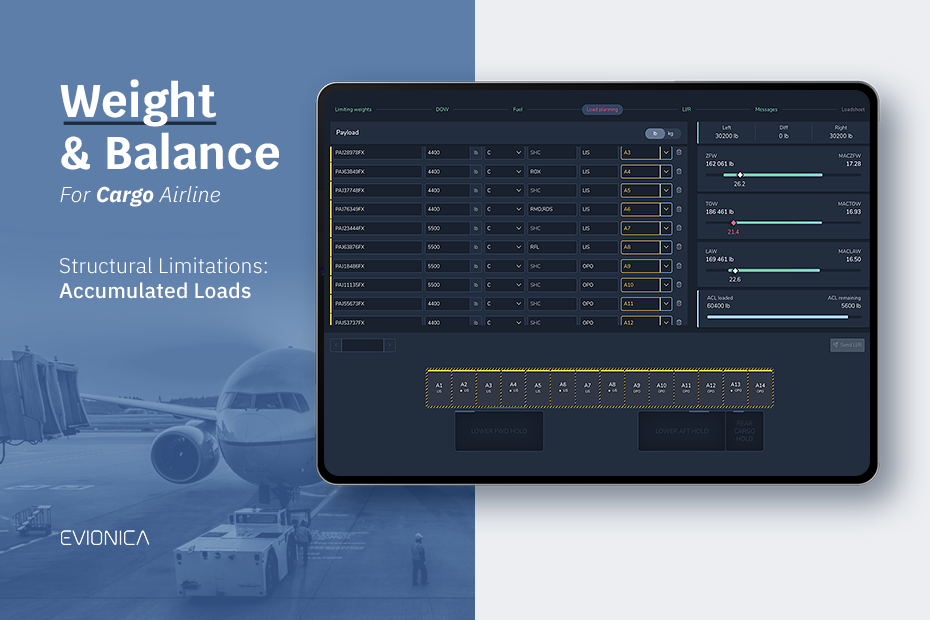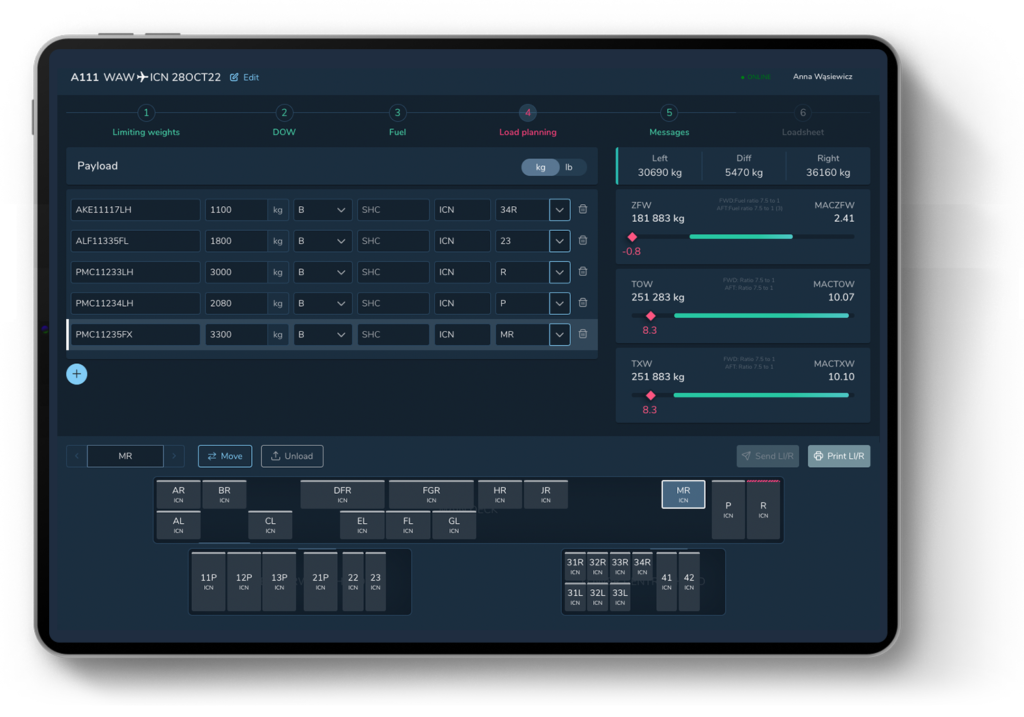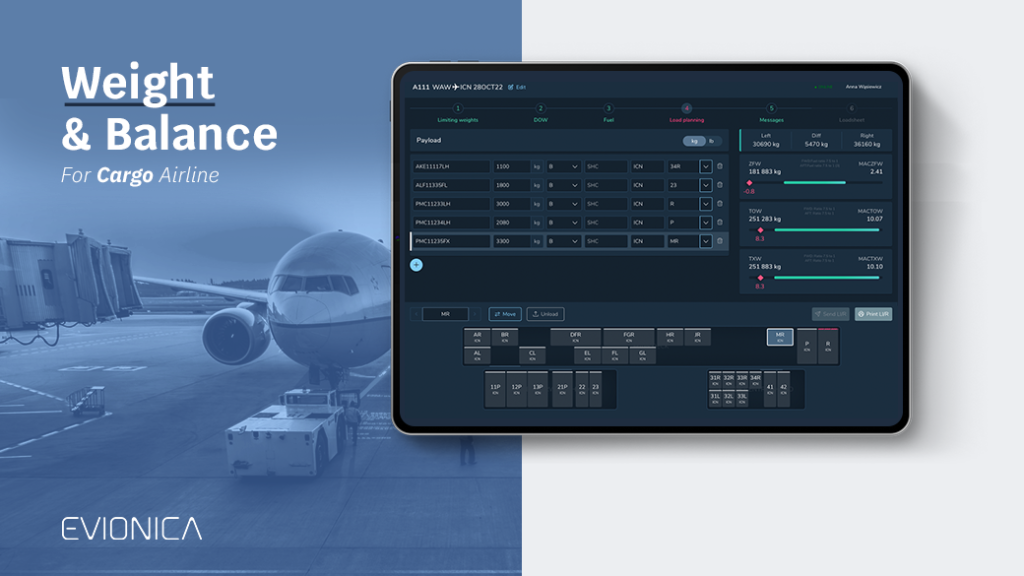Structural Limitations: Accumulated Loads

The aircraft structure is designed to withstand certain bending moments and vibrations. To prevent excessive forces exerted on a structure, manufacturers regulate the weight of the load that is allowed in a given section of a fuselage. The limitation can apply to the whole hold space or only some designated part of it.
In the Evionica’s Weight and Balance solution, the fuselage section can be arbitrarily defined together with a weight limitation that should be validated.
1. Hold Capacity check
Validates the maximum capacity of a given hold space, for example, the Main Deck Cabin of A321 P2F can accommodate a maximum of 59 525 lb of payload.

2. Shell Zone limit
Within a given hold there can be a separate zone defined (aka Shell Zone) having a certain capacity. For A321 PCF the forward section of the Main Deck can only accommodate 7000 kg.

3. Combined Shell Zone Limit
Combined Shell Zone Limit affects both the upper and lower deck at the same time meaning that it sums up the whole cargo in a given area of the aircraft loaded in the main deck and lower deck and validates it against the maximum.

Additionally, all Shell Zone Limits can depend on different load states:
1. The maximum capacity of a given area can be changed depending on Actual Zero Fuel Weight (AZFW)
For B747-400F owned by WGA the FWD section ( between stations 228in AND 525in) can accommodate:
- 13675 kg if the AZFW <= 276 691 kg
- but this is reduced to 7856 kg for AZFW > 276 691 kg


2. Maximum load allowed for a section can depend on actual mass loaded in the different area For example in B747-400 BDSF the rear part of the fuselage (between 1480 in and 2365 in) can accommodate:
- only 112 000 lb if the total weight loaded in the over-wing area is lower than 60 000 lb
- but this can be increased to 125 100 lb provided that a minimum of 60 001 lb is loaded over-wing




